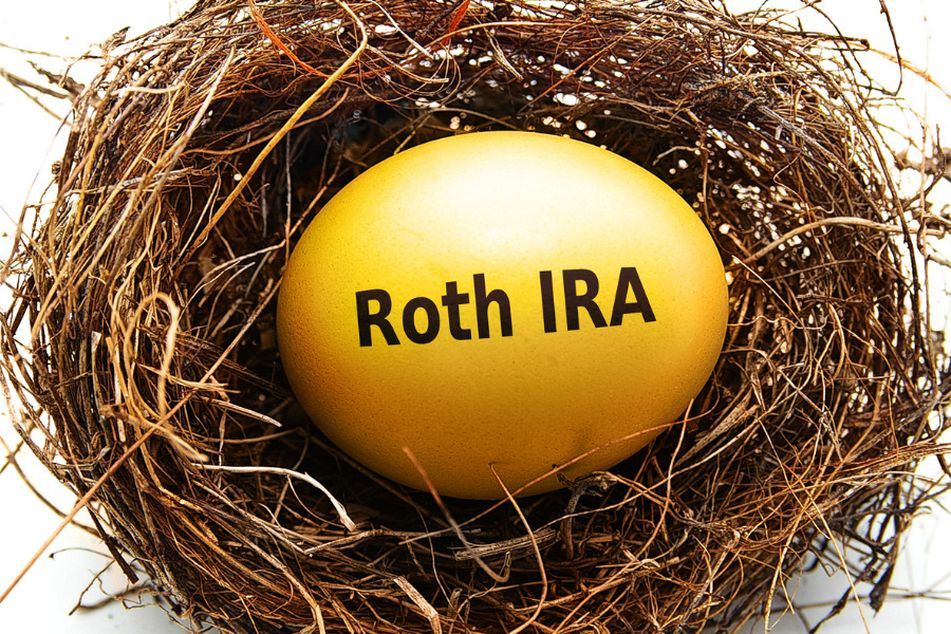4 strategies for Roth conversions

Find out about the different Roth conversion strategies available to you
Updated December 11, 2023
According to financial advisers, the time is ripe to do Roth conversions – that is, to convert traditional, pretax retirement accounts to Roth IRAs. This is due to low individual tax rates by historical standards. Also, a reversion to the higher tax rates that preceded the new tax law is set for 2026.
There may be an additional incentive if the stretch IRA, a popular estate-planning vehicle, were to disappear courtesy of retirement legislation being weighed in Congress. Beneficiaries would have to take distributions from inherited individual retirement accounts in a compressed time frame. This increases the chance that withdrawals from traditional IRAs bump heirs into a higher tax bracket, making tax-free Roth distributions a valuable prospect.
“For many people, I think Roth is going to be better,” said Leon LaBrecque, Chief Growth Officer at Sequoia Financial Group. “I’m keen on it.”
Interested in doing Roth conversions? Here are a few strategies financial advisers can use.
What is a Roth conversion?
This is the process of taking assets from a Simplified Employee Pension (SEP) Traditional or Rollover IRA from a 401(k) plan, then converting the assets into a Roth IRA.
Depending on the investor’s tax bracket, the Roth conversion can give investors significant savings on taxes. Remember that Roth IRA withdrawals are not subject to taxes when:
- there’s income or growth on the account
- funds are withdrawn after the account is held for five years
- funds are withdrawn once account holder reaches 59½
Compared to other retirement accounts, the Roth IRA doesn’t make the distribution of funds mandatory during the lifetime of the account holder. Moreover, tax-deferred growth combined with tax-free distribution makes it an excellent retirement savings tool. This is what makes the Roth IRA a better tool for estate planning.
Assessing the suitability of a Roth conversion
There can be a hefty tax bill when converting a Traditional IRA to a Roth IRA. You or your client may then make tax-free withdrawals from the now-converted account later on.
There are at least four instances where a Roth conversion from a traditional IRA makes sense:
1. Your client expects to be placed in a higher tax bracket.
Although most people’s incomes and tax brackets decline after retirement, that isn’t always so. If your client already has a lot of money stashed in a traditional IRA, the Required Minimum Distributions by the time they reach 72 can boost their income significantly. That will place them in a higher tax bracket, so making a Roth IRA conversion makes perfect sense in this case.
2. You expect the government to substantially raise taxes in the future.
If you think that taxes will be much higher by the time your client retires, it may be wise for them to take the tax hit now. In this case, assets will be subject to a one-time tax bill from the conversion. Any future withdrawals from the now-converted Roth IRA will be tax-free.
3. It’s required for estate tax planning purposes.
Since 2023, the rule that Roth accounts must make Required Minimum Distributions (RMDs) after account holders reach 73 years old has been done away with.
Meanwhile, in 2033, account holders will no longer have to make RMDs either when they reach 75.
So, if your clients don’t need to make any withdrawals from their Roth accounts, they can leave the account to grow. They can have their heirs make tax-free withdrawals sometime in the future.
4. Your client will move to a state that has state income tax when they retire.
Let’s say your client lives in a state with no state income tax, then plans to move to a state with high income tax rates. In this case, it would make sense to do a Roth conversion for some or all of their money.
Another option to consider is moving to one of the states with lower tax burdens.
Tax Implications of Roth conversions
In general, as Roth conversions are funded with pre-tax money, these are taxed as ordinary income in the year the conversion is made. Conversions can affect the taxability of favorable income as well, such as long-term capital gains and dividends.
A Roth conversion can potentially raise your client’s income level and, therefore, their tax bracket. Depending on the income level, these can be taxed at rates of 0%, 15%, 18.8% or 23.3%.
Remember also that a Roth conversion can impact the taxability of Social Security benefits and increase Medicare part B and D premiums.
Timing of Roth conversions
The best possible time to do a partial or total Roth conversion is when the account owner turns 59½, and five years after that to avoid the Five-year Rule.
Another good time to do a Roth conversion is when the stock market is in decline, and your client needs money. A Traditional IRA will likely decrease in value when the stock market is down. Converting will mean paying less taxes.
For example, your client had $80,000 in a Traditional IRA and there’s been a downturn in stocks, decreasing its value to $60,000. By converting to a Roth IRA, they’ll pay less taxes up front.
It’s possible to do partial Roth conversions of certain amounts, so that your client can make future tax-free withdrawals.
Finally, if the Traditional IRA has lost some value and your client’s income is lower, and/or your client has tax deductions, this can be a good time for a Roth conversion. In this situation, your client pays tax on a smaller converted dollar amount. The reduced taxable income and/or deductions can put them in a lower tax bracket for more tax savings.
Roth conversion strategies
Here are the different ways of doing Roth conversions:
1. Backdoor Roth IRA
This is one of the more common Roth conversions. It allows people with income beyond the Roth IRA limits to still make a Roth IRA contribution without the tax consequences.
For some taxpayers, Roth IRAs can have restrictive income limits. In 2019, single taxpayers couldn’t contribute to a Roth IRA if their modified adjusted gross income exceeded $137,000.
High-income clients can still get money into a Roth IRA using a 2-step process:
- contribute money to a non-deductible IRA
- convert the account to a Roth IRA
Before 2010, this strategy wasn’t possible because of income limits on Roth conversions of traditional IRAs.
There are a few caveats. An individual with multiple IRAs is subject to an IRA aggregation rule. This rule takes all IRA assets — including pretax IRAs — into account when determining a conversion’s associated tax. Advisers can sidestep the problem by rolling pretax IRA money into a 401(k) plan, which isn’t subject to the aggregation rule.
Investors should also be wary of the step transaction doctrine. This means if the two steps of a conversion are completed within a time frame, that’s too close to each other. The IRS may conclude they were really part of one transaction, warned Michael Kitces, partner and director of wealth management at Pinnacle Advisory Group.
In that case, the IRS would treat the transaction like a Roth IRA contribution made by a high-income individual — a breach of tax rules. To avoid this, Mr. Kitces advises waiting a full year between making the contribution and doing the conversion.
Read more: Everything you need to know about backdoor Roth IRAs
2. Mega backdoor Roth conversions
Similar to the backdoor Roth, the mega backdoor Roth strategy is done within a 401(k) plan. The strategy entails making an after-tax 401(k) contribution and then doing an in-plan conversion to a Roth account using the after-tax money.
The higher 401(k) contribution limits allow clients to deal with larger sums of money. Individuals who are 50 years old could make $62,000 in total contributions to 401(k) plans in 2019 — including employee and employer contributions and after-tax contributions. A client who’s over 50 potentially could make $37,000 in after-tax contributions yearly, assuming there’s no employer match.
A few caveats: business-owner clients need to ensure the strategy won’t make their 401(k) plan fail non-discrimination testing. The 401(k) plan must also allow for after-tax contributions. Clients must max out their pretax and Roth contributions before making after-tax contributions.
Read more: What you need to know about backdoor Roth conversions
3. Conversion-cost averaging
Financial advisers often view a sell-off in the stock market as an optimal time at which to do a Roth conversion. In this situation, account values are reduced, so the associated tax isn’t as high.
In the past, clients could undo or “recharacterize” a Roth conversion if they didn’t like the outcome. Clients would likely keep a conversion if the market went up afterward, and would undo it if markets fell, Mr. Kitces said.
Unfortunately, the 2017 tax law changed all that, making it imperative that advisers get it right the first time. Conversion-cost averaging is a timing strategy similar to dollar-cost averaging.
So, if a client wants to convert $120,000 to a Roth account during the year, advisers can consider splitting the amount. They can do $30,000 per quarter or $10,000 a month, for example, rather than converting the entire amount at once, Mr. Kitces said.
4. Conversion barbelling
This is another timing-related technique. In this conversion strategy, advisers will often try to “fill up” marginal tax brackets via Roth conversions. For example, if a client is $10,000 short of being part of a higher tax bracket, an adviser may choose to do a Roth conversion for exactly $10,000, thus avoiding the higher tax rate.
This precision is difficult early in the year when advisers don’t have a clear sense of clients’ income and expenses. As a workaround, advisers can choose to do “barbell” conversions. According to Mr. Kitces, this is achieved by converting a chunk of money at the beginning of the year and potentially “truing up” the conversions towards year-end.
For example, if a client wants to convert a total of $100,000 during the year, perhaps convert $80,000 in January and the remaining $20,000 in December.
Mr. Kitces suggested that advisers can even combine the conversion-cost averaging and barbell strategies by using the former in the first half of the year and the latter in the second half of the year.
Here’s a video explaining the benefits of converting a Traditional IRA to a Roth IRA:
Before converting here are some points to consider:
- Your client cannot switch back to a Traditional IRA. It’s important for investors to fully understand their tax situation and ability to pay for the conversion with non-retirement funds. Remember, a Roth conversion cannot be reversed!
- Your client should have funds to pay income taxes. The benefits of a conversion are higher if the income taxes due can be paid out of non-retirement funds or assets. To manage the taxes better, convert only a portion of assets. There is no limit to the number of conversions, so crunch the numbers and see if converting smaller amounts spread out over several years is better than a total conversion.
- Consider your client’s time horizon. If they need money within the next five years, a Roth IRA conversion is not a good strategy. The five-year waiting period is required if they are not yet 59½ years old – in this case, they will have to pay 10% of the converted amount in taxes. The longer the assets in the Roth IRA are left undisturbed, the greater the benefit from accumulated tax-free earnings.
How can Roth conversions best help your clients?
Roth conversion strategies can help maximize earnings potential tax-free and not have to pay taxes for withdrawals. When it comes to estate planning, few other strategies are as good as converting to a Roth IRA and leaving a significant inheritance.
For the best possible outcome, consider your client’s investment or retirement goals and their time horizon, and crunch the numbers. Then you can apply the appropriate Roth conversion or combination of conversions that can help your client achieve their goals.
To stay updated on Roth IRAs and other savings and retirement tools, read and bookmark our Retirement page. Here you’ll find news and advice to build your expertise so that you can help clients plan for their future better.
Learn more about reprints and licensing for this article.








